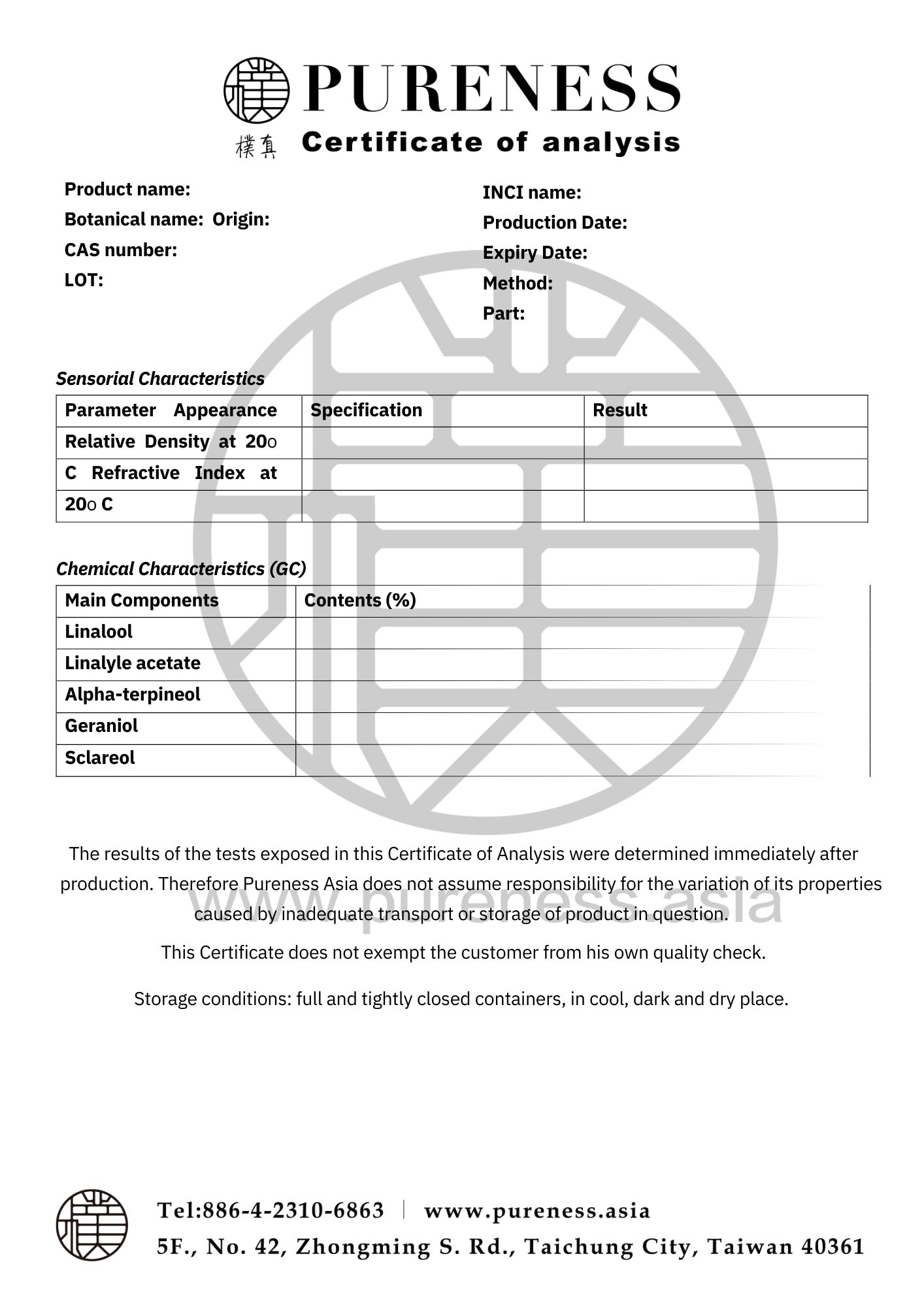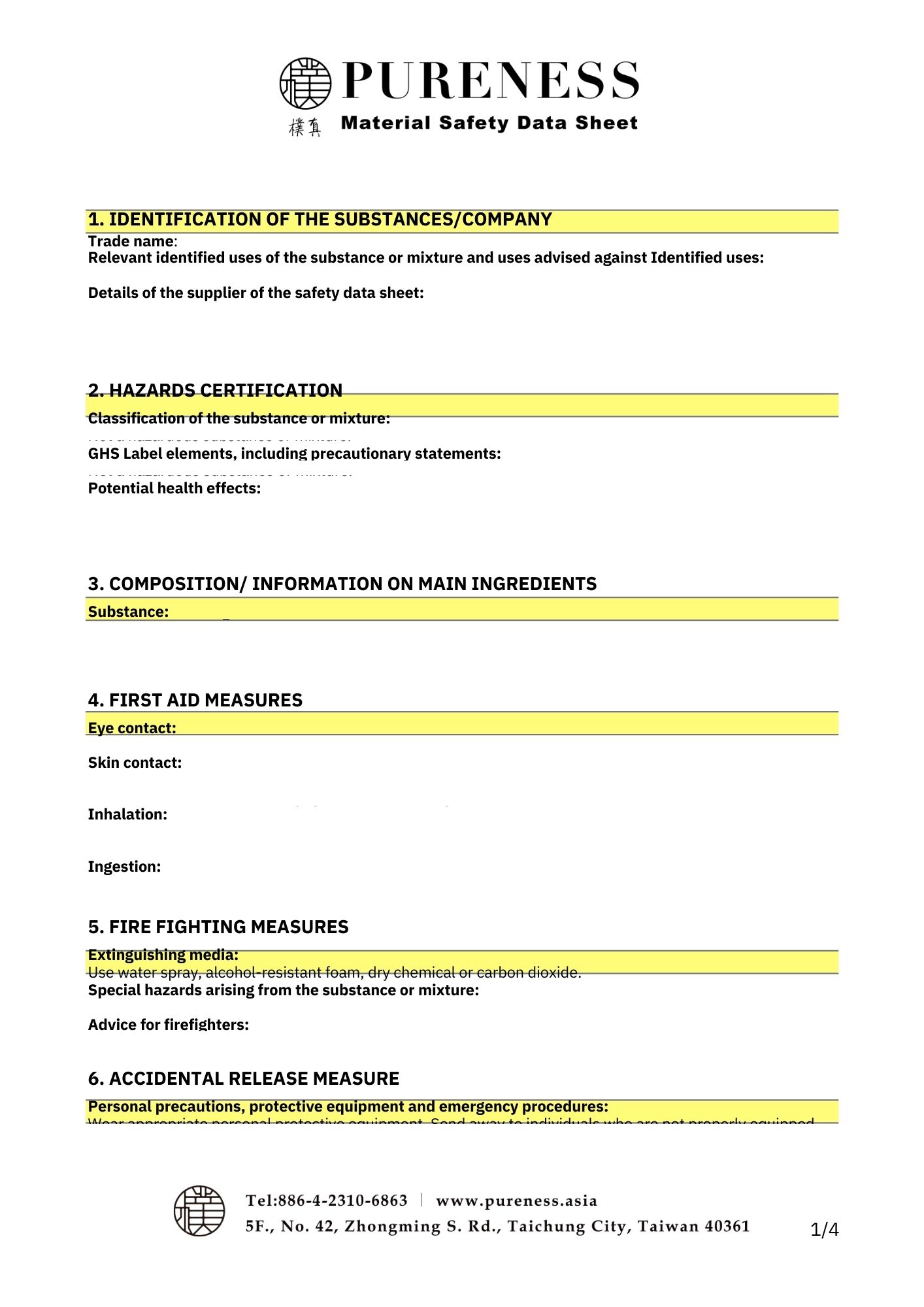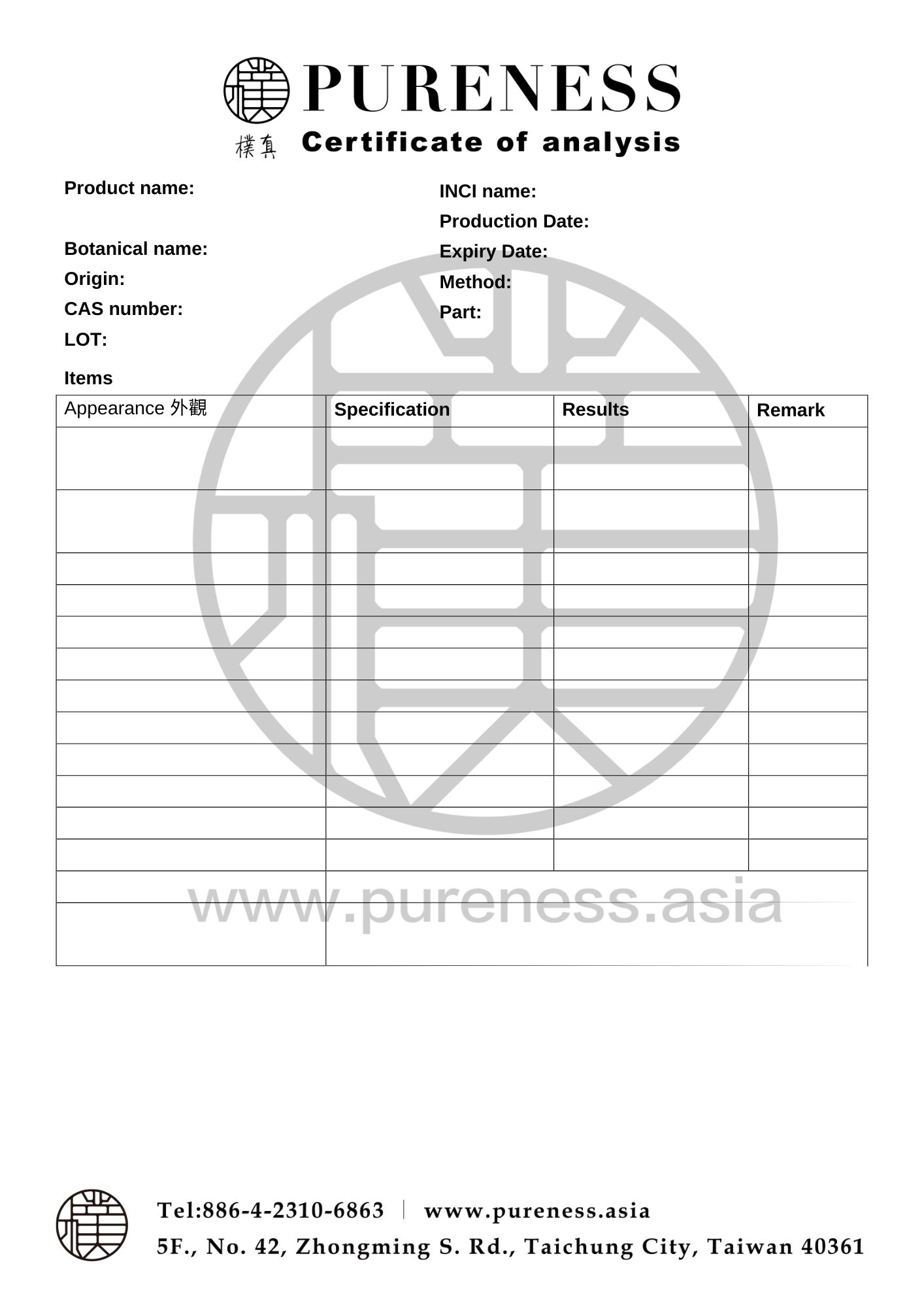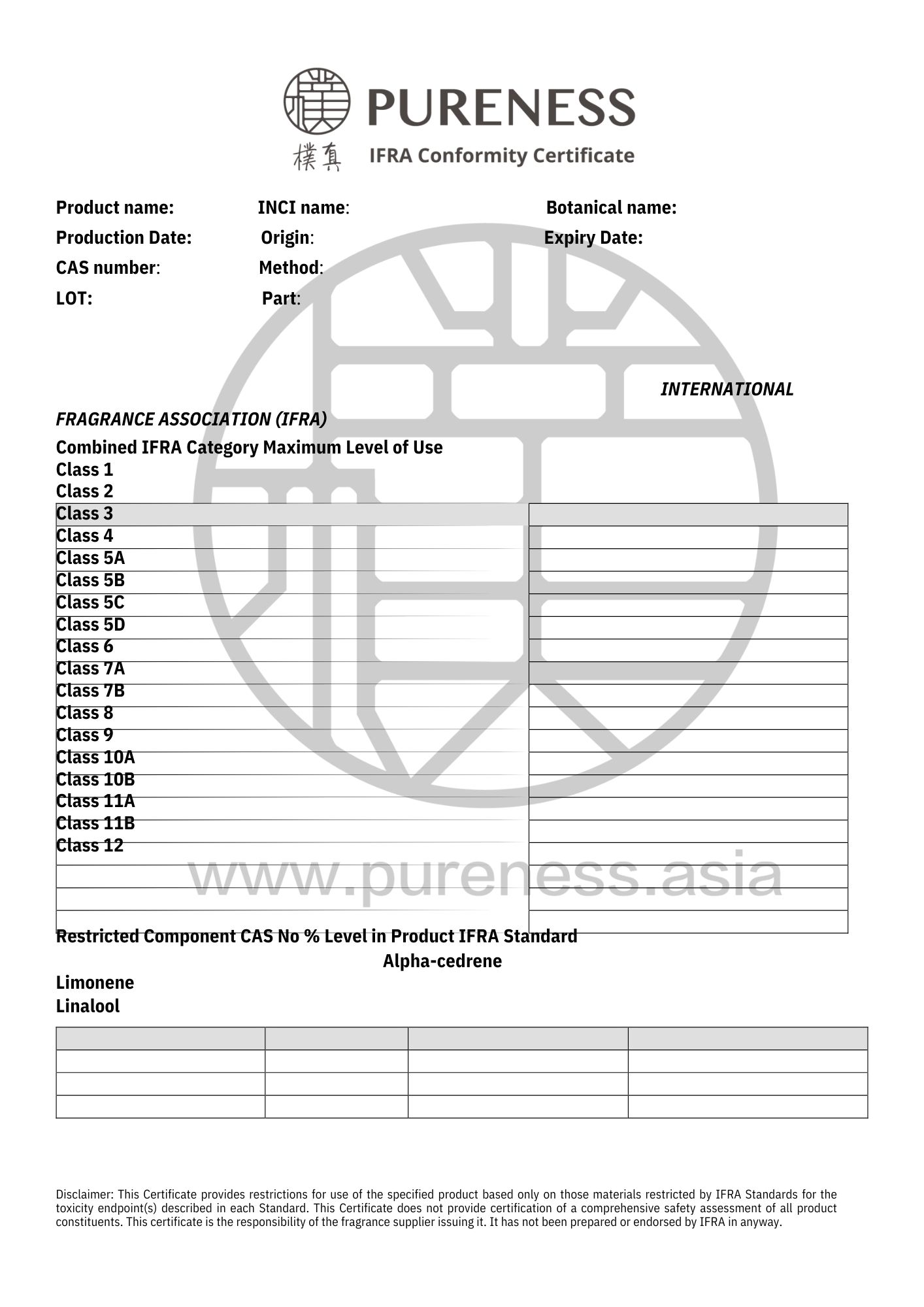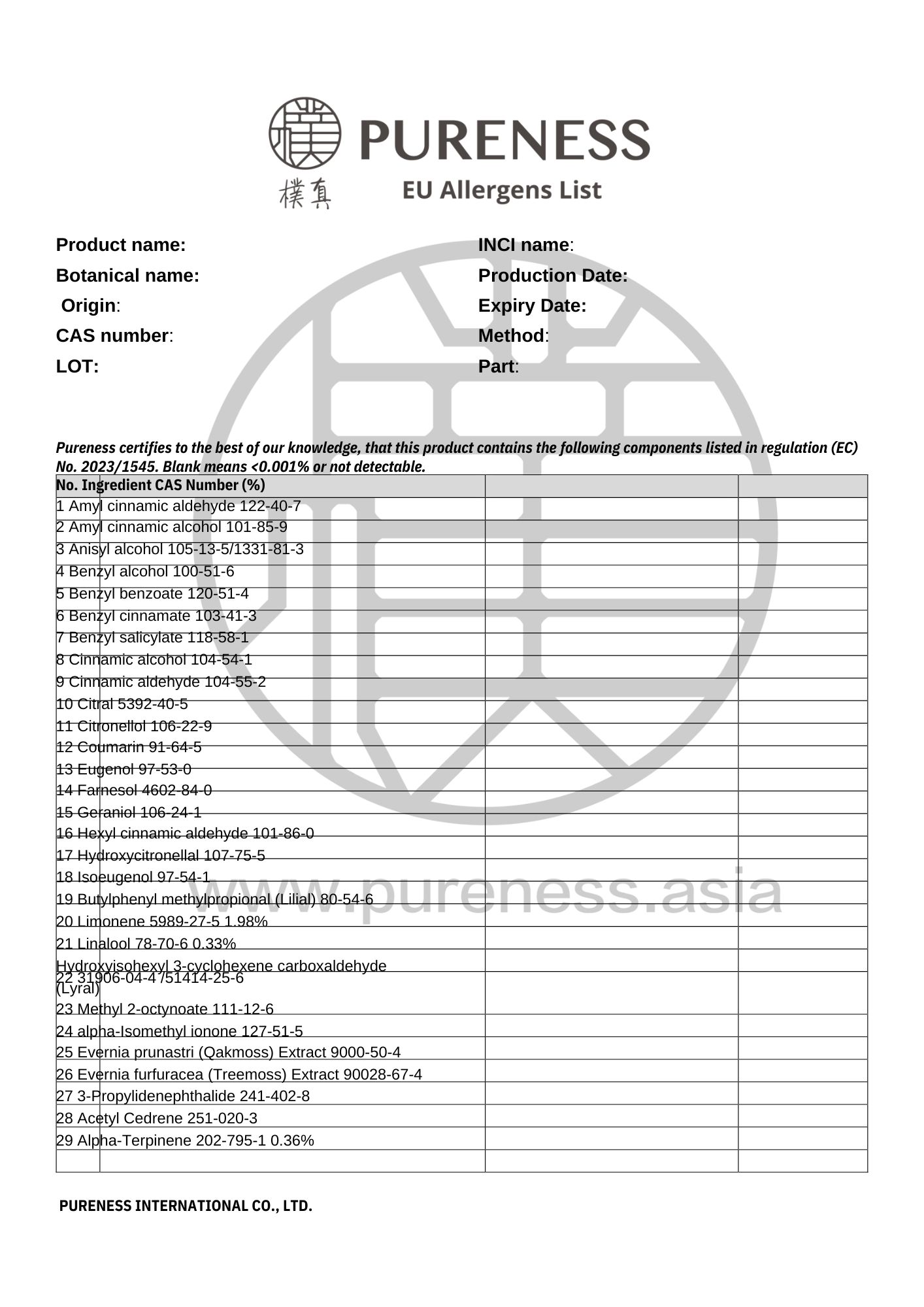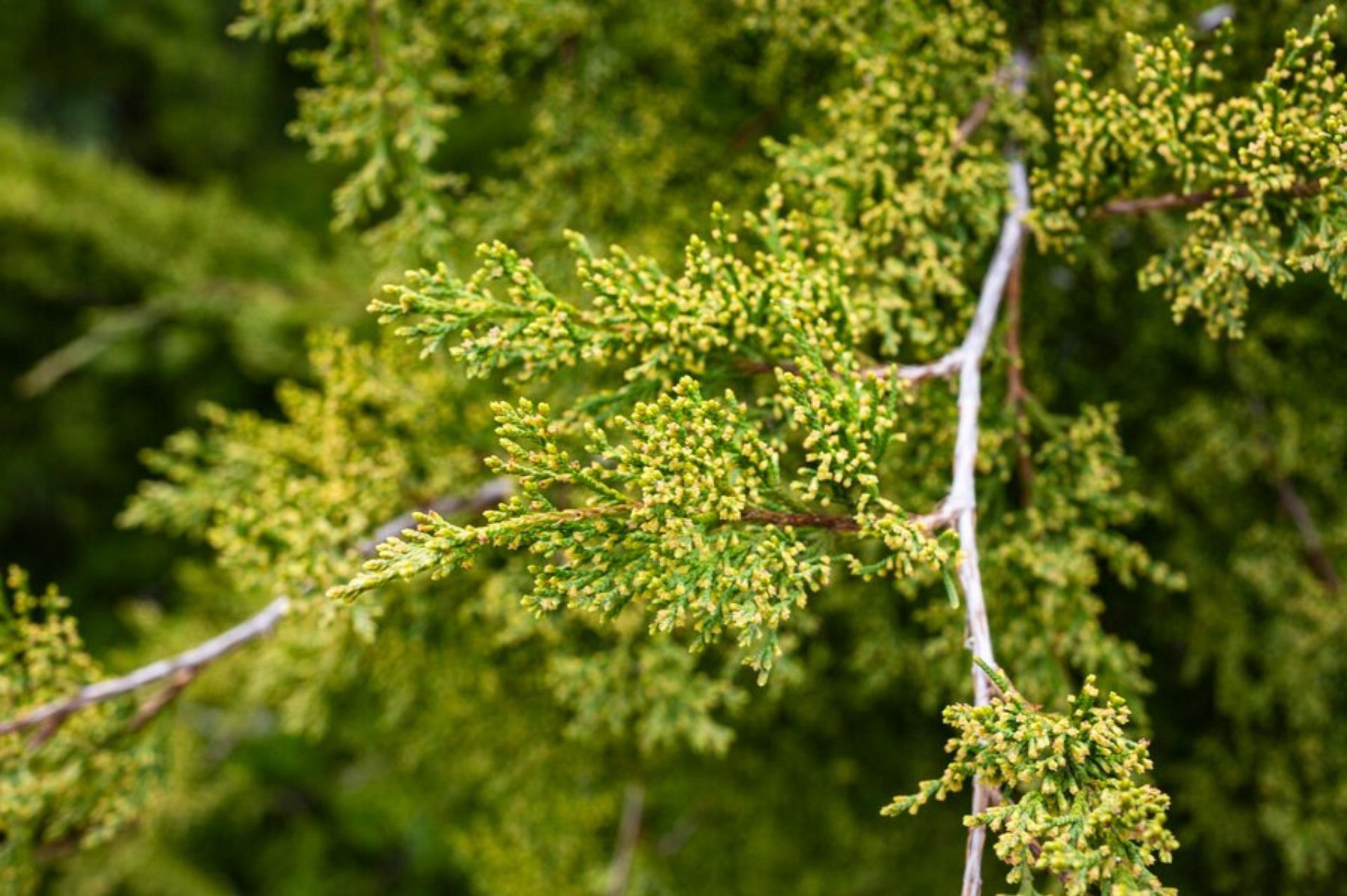
Cedarwood (Virginian)
Scientific name|Juniperus virginiana
Origin|USA
Classification|Wood series
Specifications|500g-25kg Please contact sales for details
Extraction part|Wood
Extraction method | Distillation
Plant family|Cupressaceae
Aroma|Slightly sweet woody resin scent with subtle hints of tobacco
▎Essential Oil Introduction
Cedarwood (Virginian), though commonly referred to as cedar, actually belongs to the cypress family and is related to juniper. Unlike the taller Atlantic or Himalayan cedars, Cedarwood (Virginian) is smaller and produces small, charming berries, often used by Native Americans to make decorative jewelry. Today, it is a common ornamental plant found in the U.S. and Canada, its primary production areas. It has a natural, faint resinous scent, with hard wood and a long lifespan, making it a popular building material. Historically, it has been used for centuries, and legend has it that the beams of Solomon's Temple were made from cedar, symbolizing strength and growth.
While cedar was once used for constructing temples and large structures, it is now mainly used for making pencils and small wooden items like boxes, earning it the name "pencil cedar." Its pleasant woody aroma makes it ideal for diffusing, with calming and soothing properties. Cedarwood (Virginian) is often found in men's skincare products and colognes. It is also called fragrant cedarwood, and records show that ancient Egyptians used cedarwood essential oil for disinfection and preservation. In the Bible, "Lebanon Cedar" frequently appears, symbolizing purity and nobility.
Cedarwood (Virginian) essential oil is known for regulating the endocrine and nervous systems. With high concentrations of cedrene and cedrol, it has specific effects on neurotransmitters like serotonin, making it suitable for use during times of impulsivity, restlessness, or emotional distress, helping to clear the mind of clutter.
▎Component Analysis
|Main component: α-pinene
The main components are α-pinene, cedrene, cis-thujopsene, β-caryophyllene, γ-muurolene, and cedrol, along with some trace elements such as cedrandione.
|Comparing different types of cedarwoods:
| Cedarwood (Atlas) | Cedarwood (Himalayan) | Cedarwood (Virginian) | |
|---|---|---|---|
| Latin name | Cedrus atlantica | Cedrus deodara | Juniperus virginiana |
| Origin | Morocco | India, China | North America |
| Aroma | Lively and fragrant | Rich | Pencil-like woody scent |
| Species | White cedar | White cedar | Red cedar |
| Essential oil color/scent | Yellow and viscous / pine resin scent | Yellow and viscous / pine resin scent | Colorless and transparent / woody scent |
|Research Validation

▸ Cedarwood (Virginian) is used for mental relaxation.

▸ Cedarwood (Virginian) has effects on cellular activity.
|Raw Material Certifications
To obtain relevant certification information, please contact us on WhatsApp.
▎References
- Yohana R, et al. Anti-mosquito properties of Pelargonium roseum (Geraniaceae) and Juniperus virginiana (Cupressaceae) essential oils against dominant malaria vectors in Africa. Malar J. 2022. Jul dominant malaria vectors in Africa. Malar J. 2022. Jul 14;21(1):219.1):
- Taib A, et al. Patterns of genetic diversity in North Africa: Moroccan-Algerian genetic split in Juniperus thurifera subsp. africana. Sci Rep. 2020. Mar 16;10(1):4810.
- Darwish RS, et al. Efficacy-directed discrimination of the essential oils of three Juniperus species based on their in-vitro antimicrobial and anti-inflammatory activities. J Ethnopharmacol. 2020. Sep 15;
- Kaur R, et al. The ecological and economic determinants of eastern redcedar (Juniperus virginiana) encroachment in grassland and forested ecosystems: A case study from Oklahoma. J Environ Manage. 2020. Jan 15;54: 15;
- B Semerdjieva I, et al. Hydrodistillation Extraction Kinetics Regression Models for Essential Oil Yield and Composition in Juniperus virginiana, J. excelsa, and J. sabina. Molecules. 2019. Mar 11;24(5):986.
- Zhang K, et al. The anxiolytic effect of Juniperus virginiana L. essential oil and determination of its active constituents. Physiol Behav. 2018. May 15;189:50-58.
- Kašparová M, et al. Production of Podophyllotoxin by Plant Tissue Cultures of Juniperus virginiana. Nat Prod Commun. 2017. Jan;12(1):101-103.
- Noden BH, et al. Involvement of invasive eastern red cedar (Juniperus virginiana) in the expansion of Amblyomma americanum in Oklahoma. J Vector Ecol. 2017. Jun;42(1):178-183.
- Kašparová M, et al. Plant Tissue Cultures of Juniperus virginiana.
- Nat Prod Commun. 2016. May;11(5):681-3
- Tumen I, et al. Topical wound-healing effects and phytochemical composition of heartwood essential oils of Juniperus virginiana L., Juniperus occidentalis Hook., and Juniperus ashei J. Buchholz. Jiperus occidentalis Hook., and Juniperus ashei J. Buchholz. J Med Food.2013); :48-55.
|Some images sourced from the internet. Contact for copyright removal|
